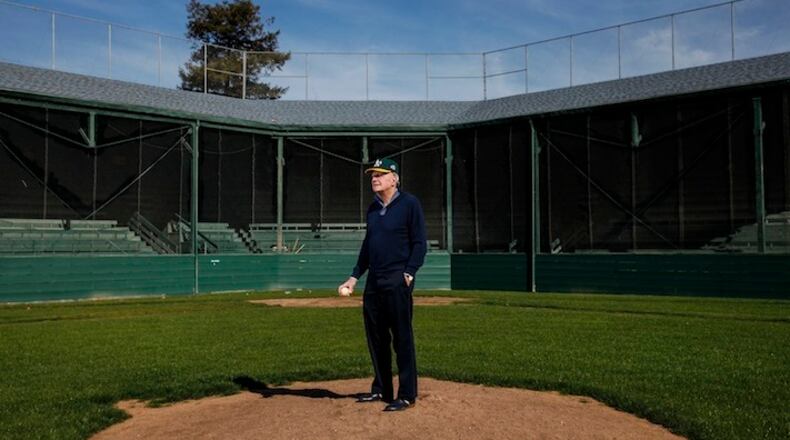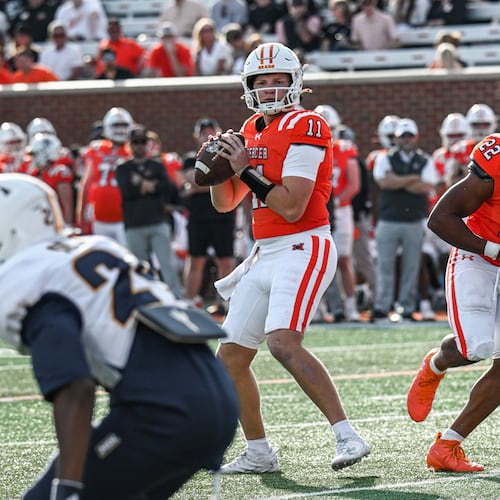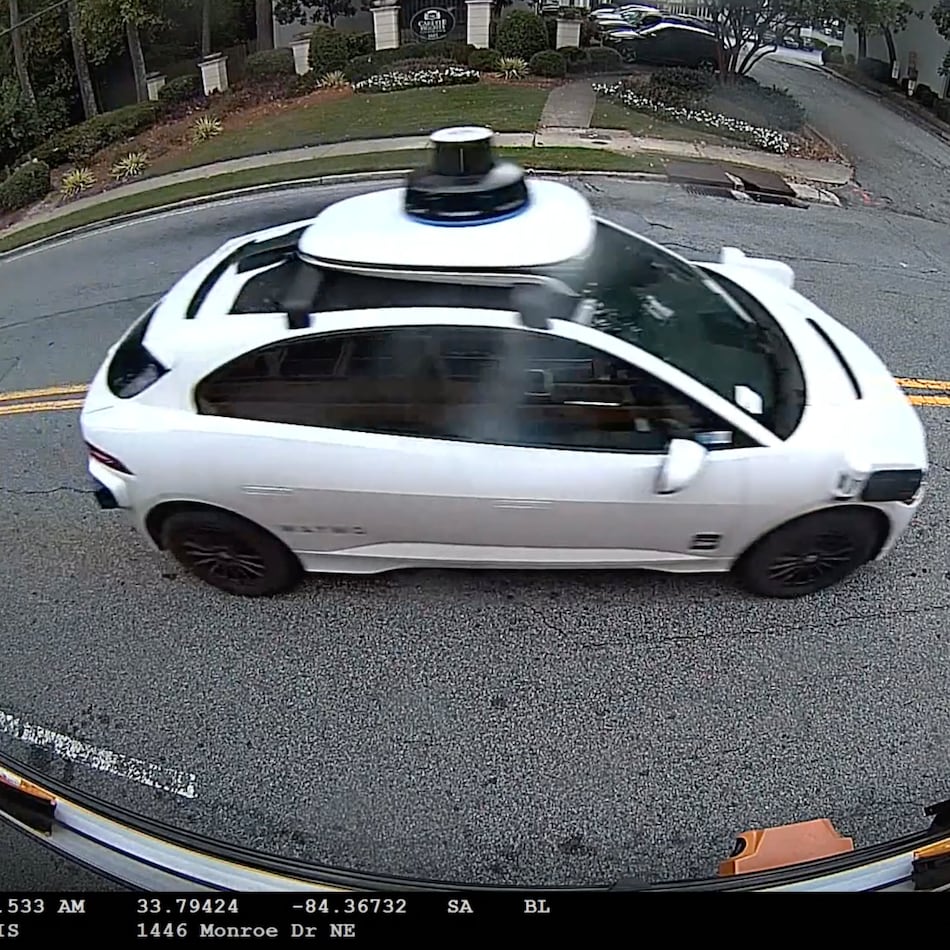Santa Clara hosting Super Bowl 50 is a miracle along the lines of “The Catch.”
Before the 49ers moved their practice center here in 1988, it would have been hard to fathom the NFL champion being crowned here, even for someone with an imagination like mine, which grew as wild as the cottontail plants along the Guadalupe River trail.
Growing up in Santa Clara in the 1970s, when it was still populated by orchards, I felt at once fixed to the earth and rootless. Those were the years when the city produced bumper crops of fruit, Jesuit-educated college graduates and Olympic swimmers but somehow failed to register with outsiders.
No one knew the way to Santa Clara. I grew accustomed to identifying my hometown in relation to San Francisco, an hour’s drive north, and neighboring San Jose. I always did so through gritted teeth, of course, because the air in Santa Clara was perfumed with pride (and also with honeysuckle and apricots).
The retired NFL tight end Brent Jones, a Santa Clara University product who earned three Super Bowl rings with the 49ers, was on the team when it relocated the practice center from Redwood City, a move of 21 miles.
“Guys had no idea where Santa Clara was,” Jones said.
Edward A. Panelli, an 84-year-old former California Supreme Court justice who was born and raised in Santa Clara, described his hometown as “still the orphan child” to San Francisco and San Jose.
“When you say you’re going to ‘the city,’ it’s always San Francisco,” Panelli said. “And so you’re always like a second cousin.”
Perpetuating Santa Clarans’ perceptions of themselves as the waifs of the West Coast, the NFL will hold most of its pre-Super Bowl events in San Francisco, where the 49ers played from 1948 to 2013.
“With so many activities taking place in San Francisco, that’s caused a little bit of heartburn in Santa Clara,” Panelli said over dinner at an Italian restaurant a few blocks from where he grew up.
Levi’s Stadium, the 49ers’ home since 2014, is 6.9 miles from Panelli’s childhood home on a downtown street percussed by developers’ wrecking balls. The new stadium looks like a spaceship that landed near a downtown once lined by Victorian and Craftsman houses.
The Santa Clara of Panelli’s childhood was a pastoral paradise, with a little more than 6,000 residents. Panelli and the city, which now has about 120,000 residents, grew up together. They became infinitely more sophisticated over the years, but old perceptions die hard. Lawyers from other parts of the state, he said with a laugh, “still think I’m a country bumpkin.”
Where Levi’s Stadium stands, pears once grew. It is also where kids flocked to fly kites because of its omnipresent breeze. Thankfully, earthmovers and world-altering visionaries haven’t totally altered the landscape. It made me smile when the announcer Jim Nantz opened a Thursday night regular-season game between the 49ers and the visiting Seattle Seahawks by saying, “There’s a little bit more wind here than you’d think.”
One of the kite flyers back in the day was Patricia Mahan, a third-generation Santa Claran who, in her second term as mayor, helped spearhead the Levi’s Stadium project. Mahan remembered making her stadium pitch to NFL Commissioner Roger Goodell while they stood on a revolving viewing deck at the Great America theme park, just across San Tomas Aquino Creek from where the stadium now stands.
“I’ll never forget it,” she said. “He looked around and said, ‘This is a no-brainer.’”
Before Levi’s Stadium opened for the 2014 season, Mahan had trouble explaining where she was from when she traveled.
“I was standing in a line at the Eiffel Tower and said I was from Santa Clara,” she recalled. “Of course they didn’t recognize it. I used to say I’m from the Silicon Valley because people knew where that is. But now when I travel, if I say I’m from Santa Clara, where Levi’s Stadium is, people immediately know where that is.”
The computer-chip companies that took root starting in the 1960s put Santa Clara on the map only to reconfigure the area’s geography. The tech revolution made Santa Clara and surrounding cities effectively disappear, replaced by the boundless entrepreneurial Eden known as Silicon Valley.
The quickened pace of life that the high-tech inventions ushered in is out of step with the Santa Clara of my youth. From home to school to the library to swim practice and back home was a 2-mile loop that I walked most days, stopping along the way to smell the honeysuckle.
My world expanded in my teenage years, but not by much; I joined a swim club 5 miles from home. It was a heady time to be a swimmer in the city. Before Bill Walsh transformed the 49ers into a dynasty, George Haines made Santa Clara Swim Club, which he founded, the epicenter of the sport. From 1960 to 1980, he coached more than three dozen U.S. Olympians.
Where the scent of apricot blossoms was once overpowering, the city now reeks of wealth. According to a California Association of Realtors spokesman, the median sales price for homes in Santa Clara in November 2015 was $982,500. Among my peers, there has been an exodus from Santa Clara to Idaho, Oregon, Washington state and Arizona. Most are seeking what we took for granted as kids: an affordable, family-oriented, outdoorsy lifestyle.
So many landmarks are gone, like Vesuvio’s, where I tasted my first New York-style pizza, and the drive-in on El Camino Real, where I fell asleep halfway through the original “Star Wars” movie. The outdoor theater was razed to make way for 182 condominiums.
Steve Schott, who helped form Citation Builders, shrugged sheepishly. His company built those townhouses. Schott, 77, made his first profits off the land as a youngster by selling fruit from the trees on his family’s property near the campus of Santa Clara University, where he later played baseball. He was an owner of the Oakland Athletics during the era depicted in “Moneyball,” the 2004 book by Michael Lewis that was later made into a movie.
Seeing his team depicted on the big screen did not move Schott as deeply as seeing his hometown on the small screen does.
“When the telecast comes on and you hear, ‘Here we are on a beautiful night here in Santa Clara,’ it kind of gives you a little bit of a jolt,” he said.
One beautiful night here, I rang the doorbell of the house where I grew up. It is at the end of a cul-de-sac in a subdivision that when we moved in was opposite apricot orchards. It was a desirable neighborhood, long before every house in the city became desirable, attracting multiple bids and pricing out of the market couples like my salesman father and stay-at-home mother.
Emilio and Fatima, the couple who bought the house from my parents 28 years ago, still live there. After I introduced myself, Fatima graciously let me in. She led me through the rooms that formed my childhood stage set. The décor was different, but the rooms exuded the same warmth. I was thinking of my father, who died in 2009, as Fatima and I stopped to talk in the kitchen, which had always been the heart of our home.
As if reading my mind, Fatima said she remembered my father saying that she and her husband would not regret choosing this dwelling to raise their children.
“This is a happy house,” she said he had told her.
My father’s sentiment captures perfectly how I feel about Santa Clara. It was a happy hometown, which is why it means so much to share it this week with football fans from all over.
About the Author
Keep Reading
The Latest
Featured



